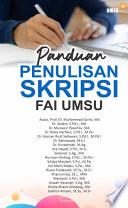Building an Effective Security Program provides readers with a comprehensive approach to securing the IT systems in use at their organizations. This book provides information on how to structure and operate an effective cybersecurity program that includes people, processes, technologies, security awareness, and training. This program will establish and maintain effective security protections for the confidentiality, availability, and integrity of organization information. In this book, the authors take a pragmatic approach to building organization cyberdefenses that are effective while also remaining affordable. This book is intended for business leaders, IT professionals, cybersecurity personnel, educators, and students interested in deploying real-world cyberdefenses against today’s persistent and sometimes devastating cyberattacks. It includes detailed explanation of the following IT security topics: IT Security Mindset—Think like an IT security professional, and consider how your IT environment can be defended against potential cyberattacks. Risk Management—Identify the assets, vulnerabilities and threats that drive IT risk, along with the controls that can be used to mitigate such risk. Effective Cyberdefense—Consider the components of an effective organization cyberdefense to successfully protect computers, devices, networks, accounts, applications and data. Cyber Operations—Operate cyberdefense capabilities and controls so that assets are protected, and intruders can be detected and repelled before significant damage can be done. IT Security Awareness and Training—Promote effective cybersecurity practices at work, on travel, and at home, among your organization’s business leaders, IT professionals, and staff. Resilient IT Security—Implement, operate, monitor, assess, and improve your cybersecurity program on an ongoing basis to defend against the cyber threats of today and the future.
... blockchain as follows: tamper evident and tamper resistant digital ledgers implemented in a distributed fashion (i.e., without a central repository) and usually without a central authority (i.e., a bank, company or government).








